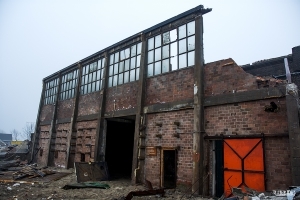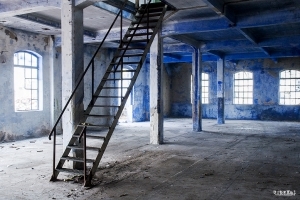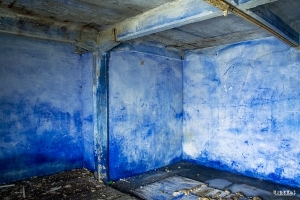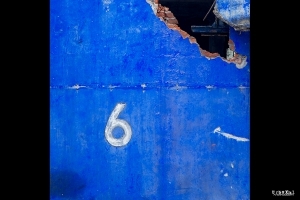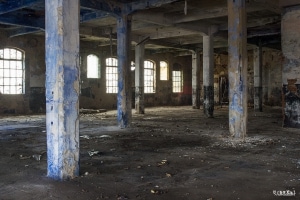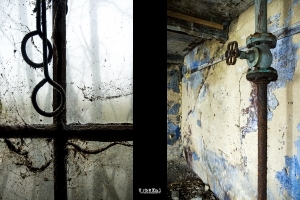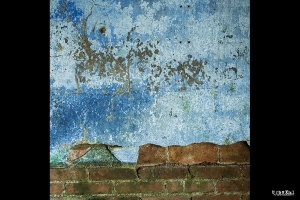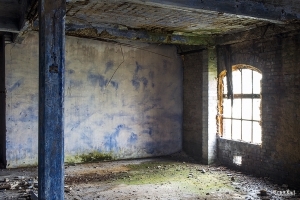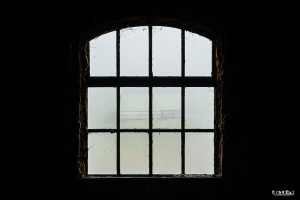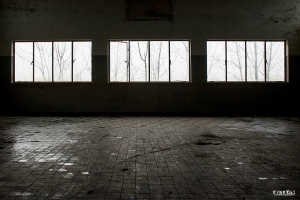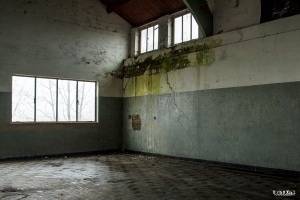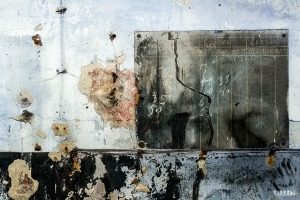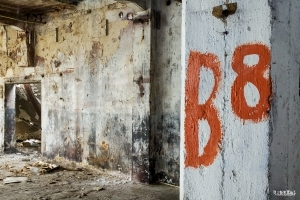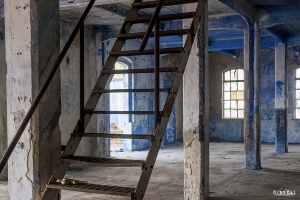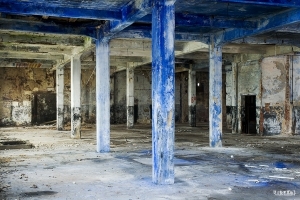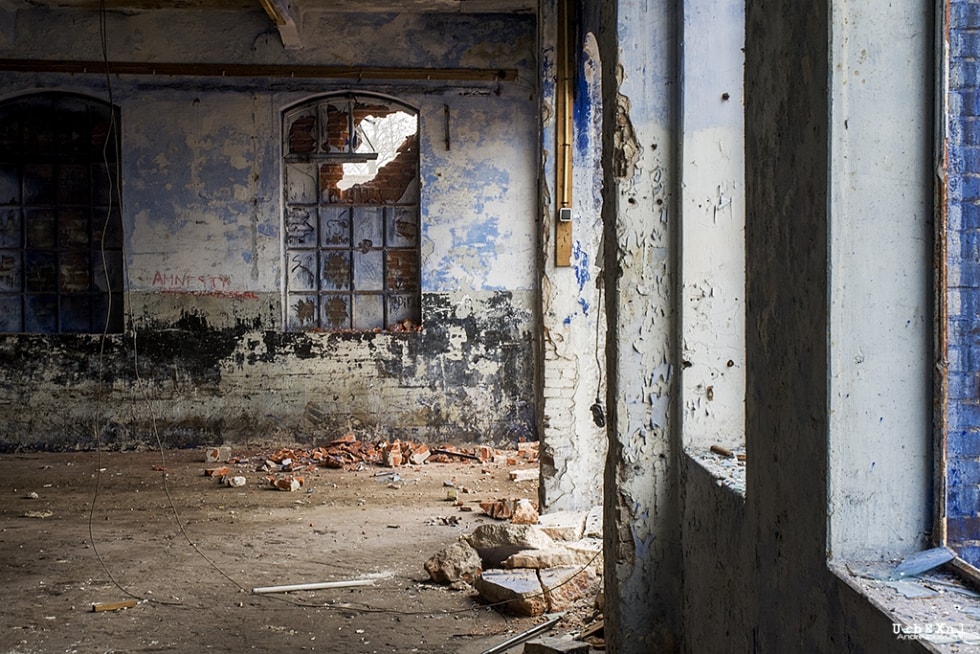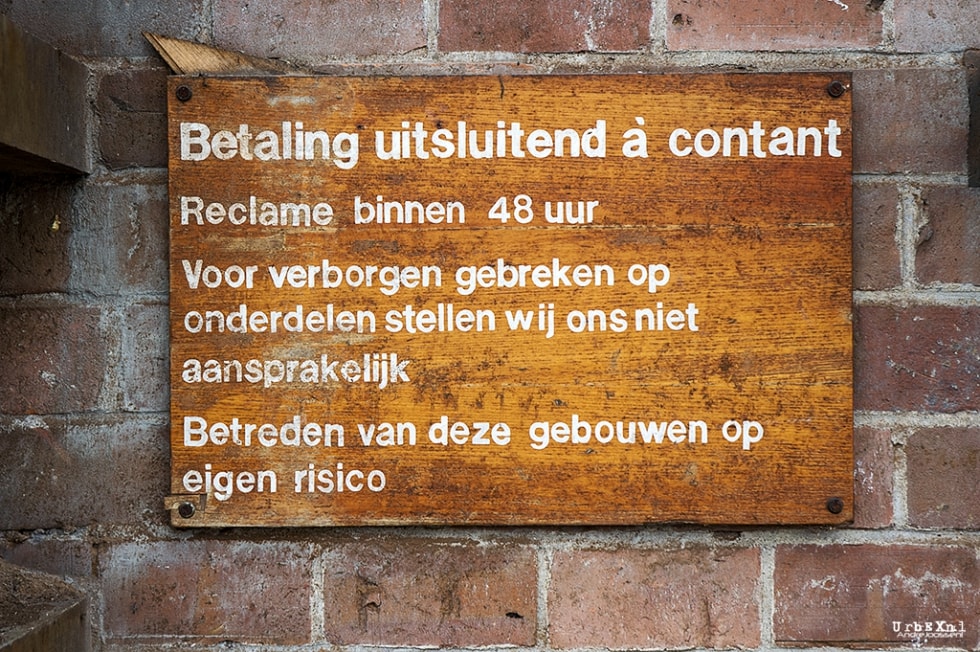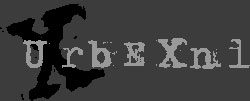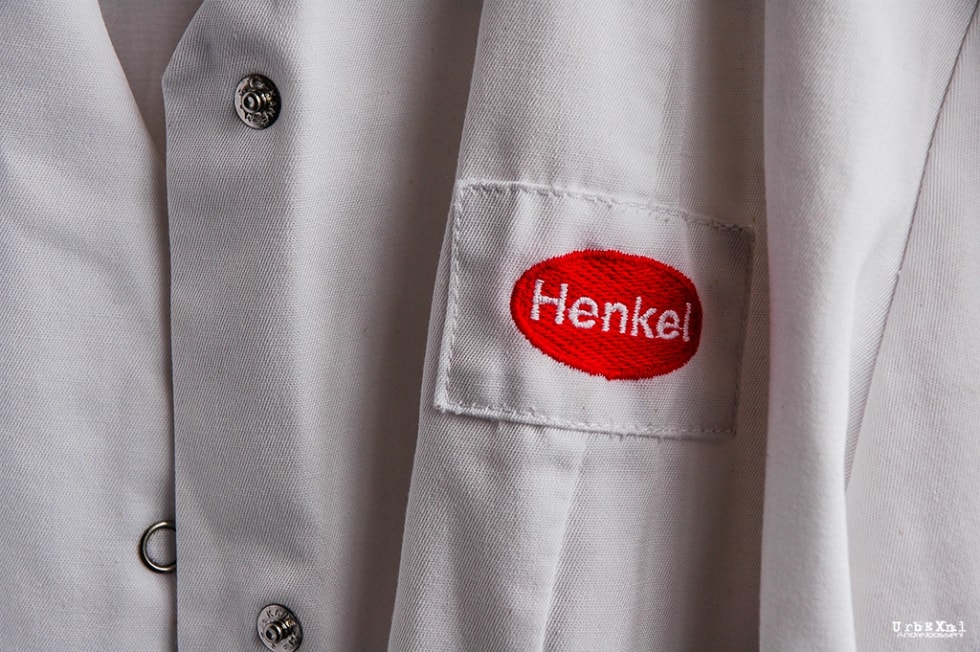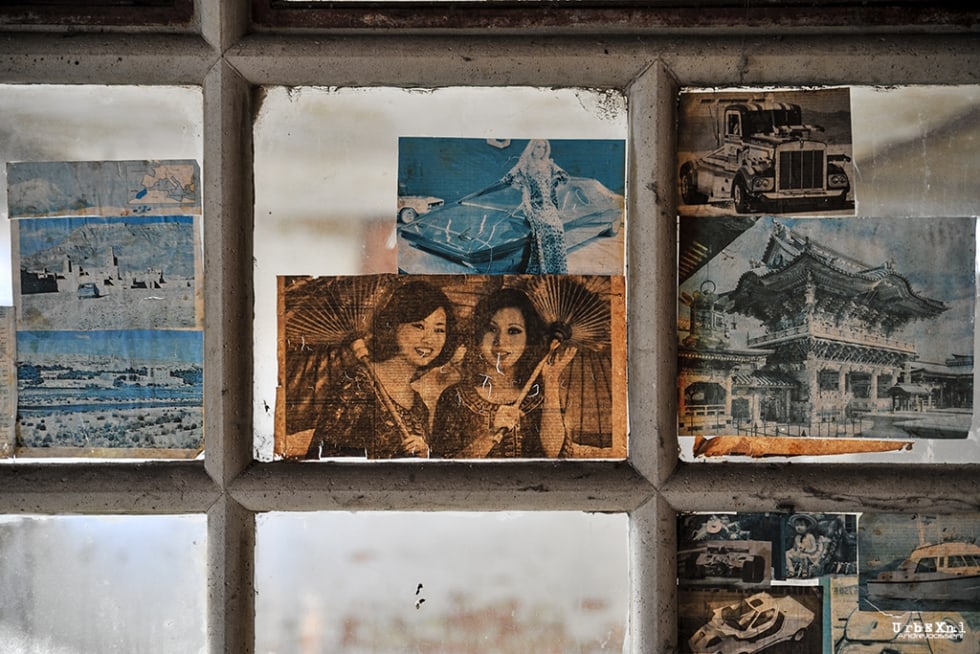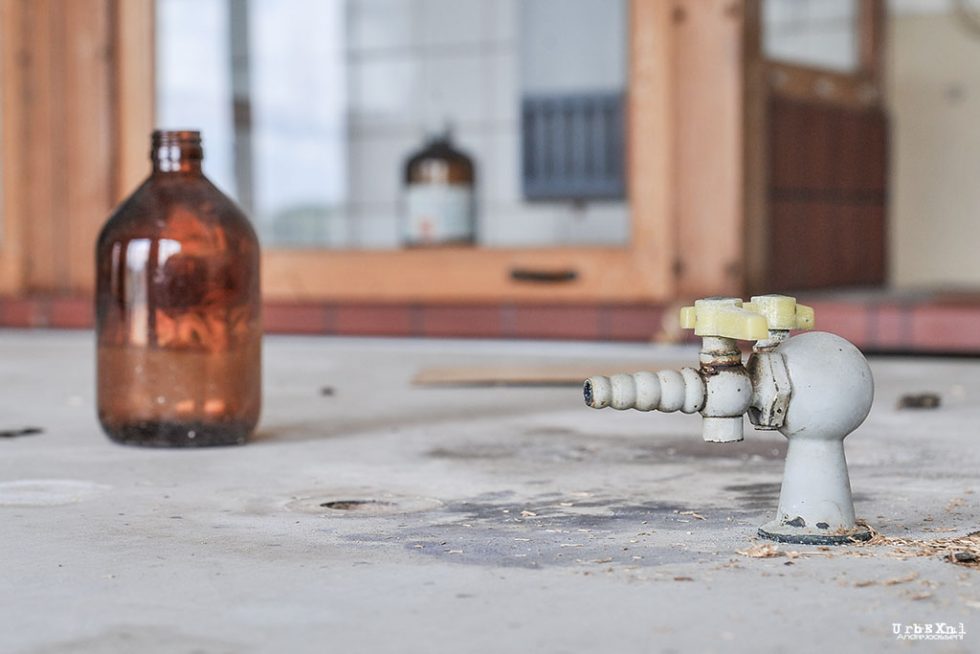Blauwselfabriek Jacob Avis
THE ABANDONED FACTORY IN THE NETHERLANDS
‘Blauwselfabriek Jacob Avis’ was an abandoned factory in Westzaan, close to Amsterdam. The factory produced the bluing. Today the factory is gone.
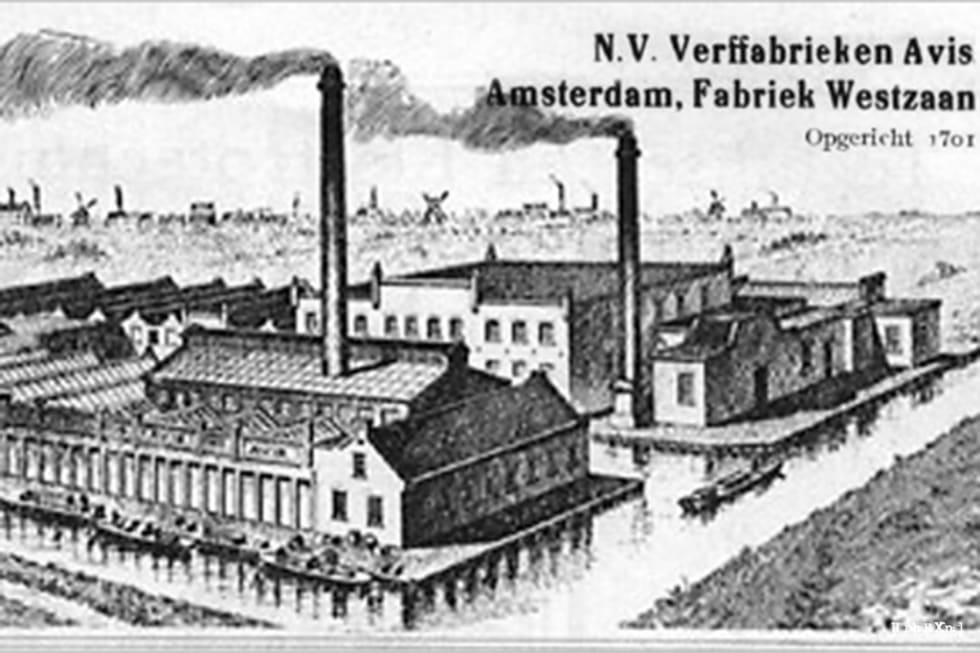
Bluing is a household product used to improve the appearance of textiles, especially white fabrics. Used during laundering, it adds a trace of blue dye to the fabric. White fabrics acquire a slight color cast after use, adding a trace of blue color to the slightly off-white color of these fabrics makes them appear whiter.
There have been only a few bluing mills in the Netherlands. In fact, most of these mills were located in Zaandijk and Westzaan.
This factory was first mentioned in 1701. The first factory operates as a mill propelled by horses. They obtain the dark blue pigment smalt by melting cobalt ore with glass. The production releases dust that colors the mill and horses blue, leading to the factory being nicknamed ‘De Blauwe Hengst’ or ‘The Blue Stallion’ in English. In 1759 the mill merged with the other bluing mill in Westzaan, De Meijer. But after the French occupation, business went downhill and the De Meijer mill was demolished.
Cornelis Avis
In 1824, starch manufacturer Cornelis Avis purchased the company. Starting in 1833, Avis began producing litmus. To facilitate this, they installed a steam engine and erected a stone chimney at De Blauwe Hengst. Litmus, used as a textile dye at the time, was produced from lichens treated in urine collected from city residents, who received small compensation for their contributions. The production of litmus earned De Blauwe Hengst the nickname Piss Mill, but it did not harm the company; in fact, litmus production was highly profitable. Avis also introduced other new products, such as cheese coloring and turret blue.
NV Verffabrieken Avis
With the growth of the company, the capacity of the old mill soon became too small. In 1848, they demolished De Blauwe Hengst and built a new mill in its place. This mill was changed to ‘NV Verffabrieken Avis’ in 1917. Over the years, the blue factory expanded, replacing all wooden factory buildings with a brick building. Besides bluing and litmus, Avis also produced other chemical dyes. Eventually, ‘Verffabrieken Avis’ went bankrupt in 1969, and a car wrecker later took over the buildings.
During my visit, 300 years after the first mill was built, I am documenting its last week. Most of the factory has already turned to dust. All that’s left is blue concrete. During the demolition in 2006 they found 10 millstones in the ground, the last ode to the Blue Stallion from Westzaan. I visited ‘Blauwselfabriek Jacob Avis’ in 2006.
